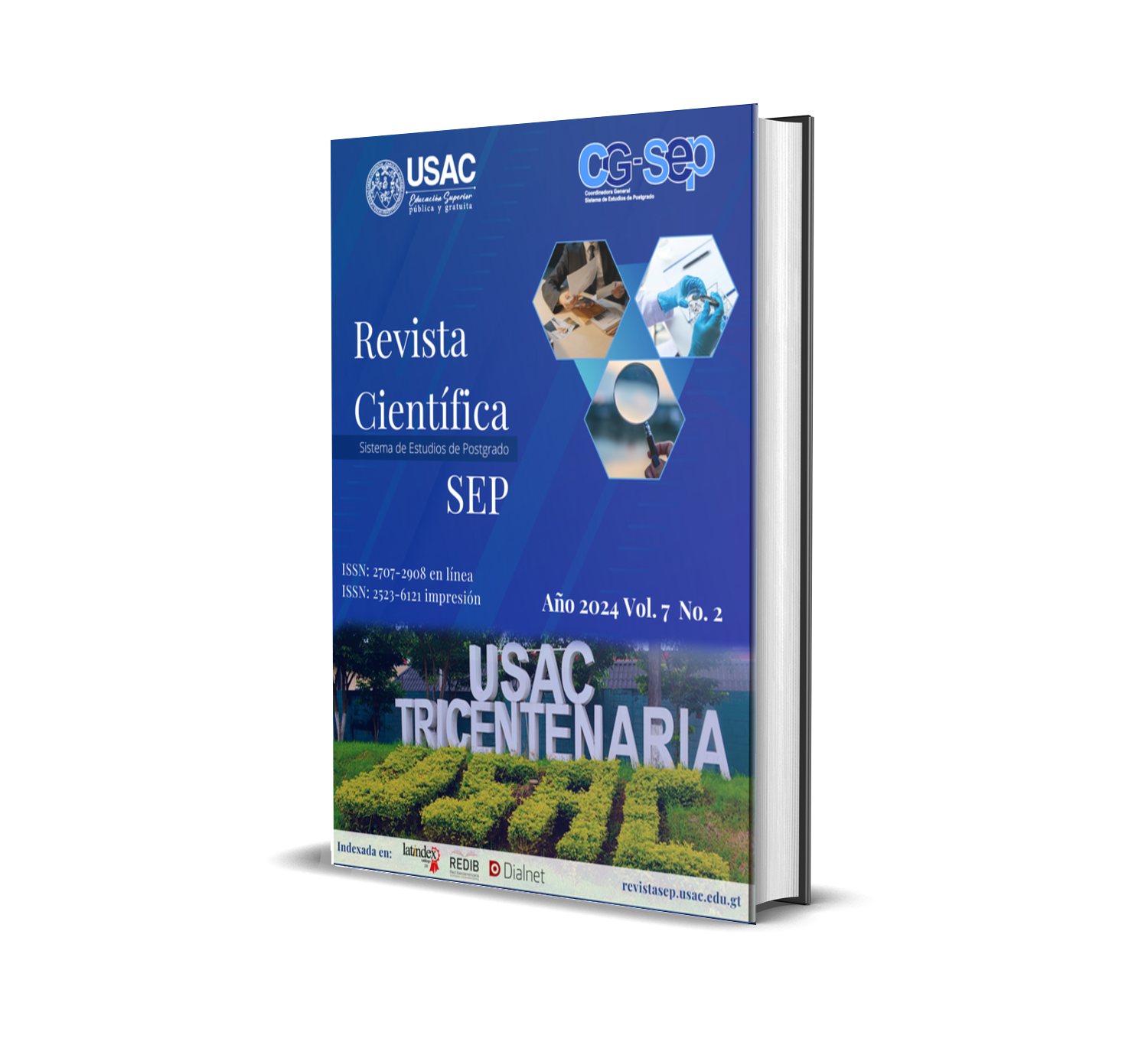Design of educational applications, tools for higher level curriculum
DOI:
https://doi.org/10.36958/sep.v7i1.239Keywords:
adapt, context, students, teachers, coordinatorAbstract
OBJECTIVE: design educational applications, describe the use of applications, identify the courses that are difficult for students in virtual environments, Know the opinion of teachers, regarding the use of educational applications. METHOD: mixed type study, the methodology used in the first phase, literature review and application of Google Forms surveys, aimed at Teachers, as a result, quantitative data was obtained that was used for the second phase. Finally an interview was applied to the Course coordinator, for the construction of qualitative knowledge, a third phase was carried out with teachers from the USAC School of Graphic Design, and three groups of students from the “ Visual Techniques 5, course”, who provided graphic contributions through an explanatory video as part of the educational application, which was called “ADC (Adapt Design to Context). RESULTS: creation of the web space managed by DDA, and the video (Adapt Desing to Context). CONCLUSION: the use of the “ADC” Application at the beginning of each semester by architecture students favors the teaching-learning process.
Downloads
References
Avendaño-Castro, W. R., & Parada-Trujillo, A. E. (2013). El currículo en la sociedad del conocimiento. educación y educadores. 16 (1) 159-174. https://www.redalyc.org/articulo.oa?id=83428614008 DOI: https://doi.org/10.5294/edu.2013.16.1.10
Colectivo, C.-a. (2019). El arte de planificar. (1era. Edición) Fundación Pedagógica, 17-25. Matagalpa, Nicaragua: https://es.scribd.com/document/441011830/LIBRO-El-arte-de-planificar
Espejo Villar, B., & al, e. (2021). Caracterización de las mejores prácticas educativas: UNESCO y el paradigma del aprendizaje móvil. Digital Education Revie, 39, 20-31. https://revistes.ub.edu/index.php/der/article/view/33100/pdf DOI: https://doi.org/10.1344/der.2021.39.336-355
Gómez Quitian, J. C. (2019). Las aplicaciones tecnológicas al servicio de la educación superior. Revista Electrónica en Educación y Pedagogía, 3 (5), 95-109. https://doi.org/10.15658/rev.electron.educ.pedagog19.09030506 DOI: https://doi.org/10.15658/rev.electron.educ.pedagog19.09030506
Kikulska-Hulme A. (2010). Learning cultures on the move: where are we heading? Open Research Online. 4-14. https://oro.open.ac.uk/25679/1/Learning_Cultures_ETS_Agnes_Kukulska-Hulme.pdf
Peralta-Castro, F. y Mayoral-Valdivia, P. (2022). La investigación acción como estrategia de reflexión, mejora y cambio en la práctica docente de la enseñanza de lenguas. Revista Iberoamericana Para La Investigación y el Desarrollo Educativo. 14-38.
https://doi.org/10.23913/ride.v12i24.1152 DOI: https://doi.org/10.23913/ride.v12i24.1152
Ruiz, O., (2021). Diseño Instruccional de la USAC, la nueva normalidad. Universidad de San Carlos de Guatemala, Informe Final de Investigación de la División de Desarrollo Académico, -DDA-, Departamento de Investigación Universidad de San Carlos de Guatemala: S/E.
Ruiz, O., (2022). Diseño de Aplicaciones Educativas, estrategias para el desarrollo del currículo a nivel Superior. Informe Final de Investigación de la División de Desarrollo Académico, -DDA-, Departamento de Investigación, Universidad de San Carlos de Guatemala: S/E.
Universidad de Chile, Centro de Enseñanza y Aprendizaje, Escuela de Pregrado, Facultad de Economía y Negocios, (2021). Guía de uso de Google Formas para la recreación de pruebas, controles y solemnes virtuales. Facultad Economía y Negocios, Universidad de Chile, Central: S/E. https://newsletter.fen.uchile.cl/cea/tips/docentes/google_suite_eval.pdf
Published
How to Cite
License
Copyright (c) 2024 Olga Edith Ruiz

This work is licensed under a Creative Commons Attribution 4.0 International License.
The authors who publish in this journal accept the following conditions:
- The authors retain the copyright and assign to the journal the right of the first publication, with the work registered with the Creative Commons 4.0 attribution license, which allows third parties to use what is published as long as they mention the authorship of the work already the first publication in this magazine.
- Authors may make other independent and additional contractual agreements for the non-exclusive distribution of the version of the article published in this journal (eg, include it in an institutional repository or publish it in a book) provided that they clearly indicate that the work it was first published in this magazine.
- Authors are allowed and encouraged to share their work online (for example: in institutional repositories or personal web pages) before and during the manuscript submission process, as it can lead to productive exchanges, more and more quick citation of published work (see The Effect of Open Access).









